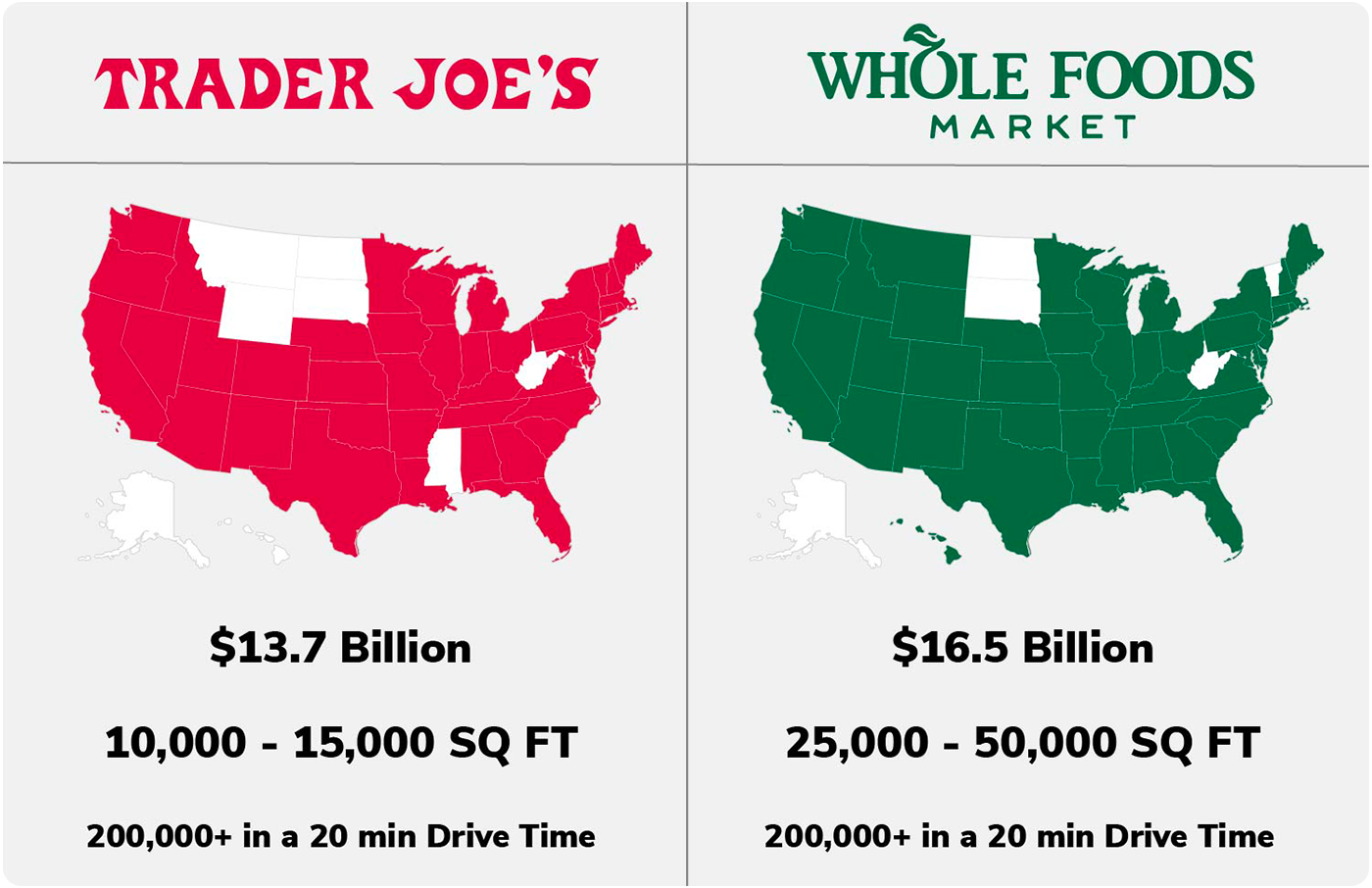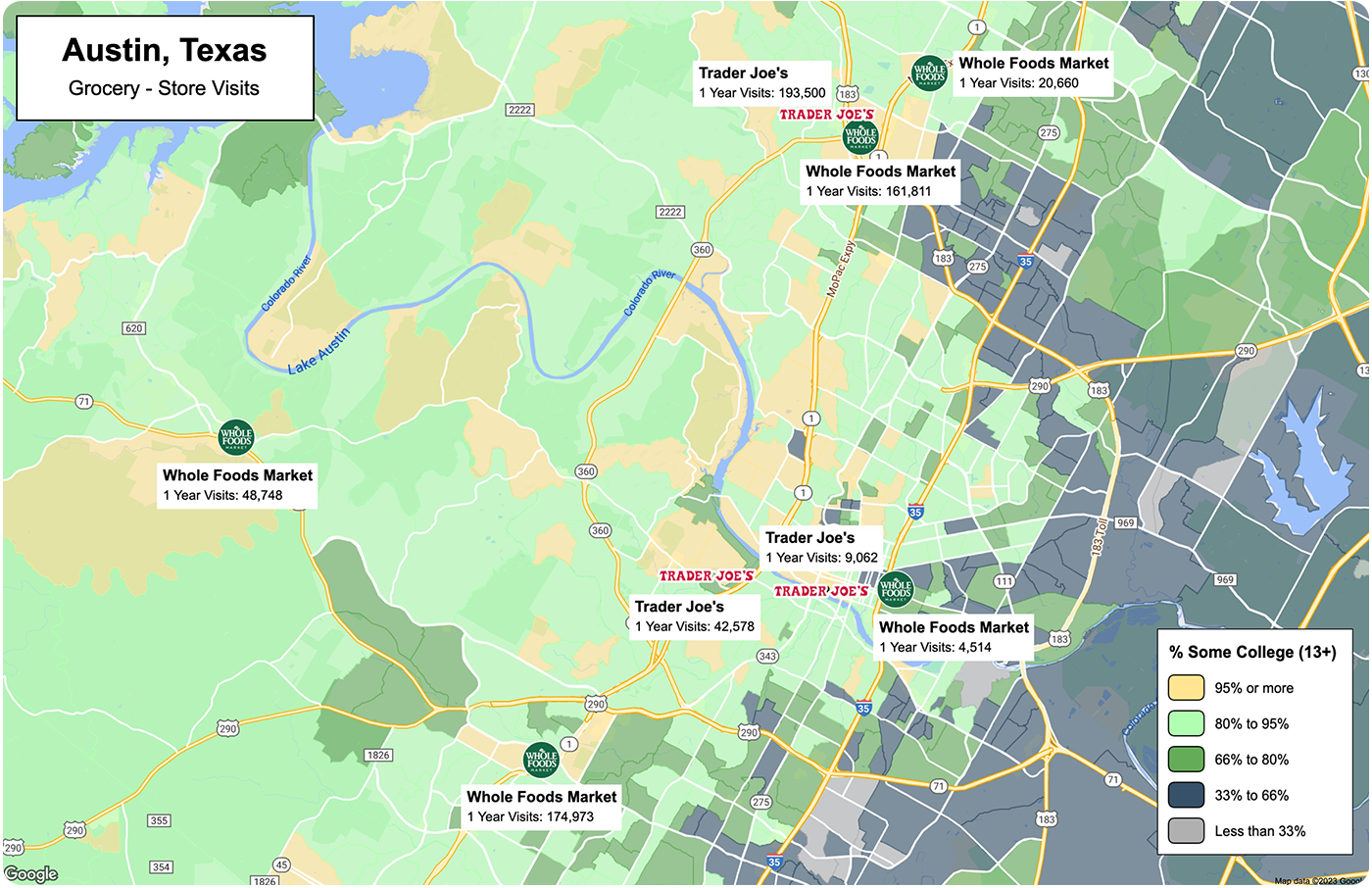Getting To Know The Grocery Store Boom
Why are small-format grocery stores performing better than large-format grocery stores?
By Alexis Cortez
Published Mar 31, 2023

By Alexis Cortez
Published Mar 31, 2023

Grocery has been the golden child of commercial real estate over the last few years, but never as much as it has been today. The big guys, like Amazon, have introduced themselves into this category, with concepts like Amazon Fresh and Amazon Go. Amazon also infamously bought Whole Foods for a record-breaking $13.7B in 2017 as another way to establish itself in this growing category. While some retailers think bigger is better, the small-format stores are the ones actually raking it in.

On paper, Trader Joe's and Whole Foods are strikingly similar, except for one key difference.
But most importantly, these two stores do have one key difference; Trader Joe's stores are approximately 10,000-15,000 square feet, while most Whole Foods locations are around 25,000-50,000 square feet. Even though some Whole Foods locations are 5 times larger than the average Trader Joe's locations, they are almost neck and neck in most measurable ways. Clearly, something about Trader Joe's is worth the hassle of tight parking, long lines, and in-store shopping only.

In Austin, TX, both retailers are found in the same neighborhoods, which happen to be a short distance from the University. Knowing what we do about their real estate requirements, these locations are all highly visited centers, with almost perfect demographics for both retailers. The northern Trader Joe's brings in about 193,000 visitors a year, while the next closest Whole Foods brings in about 160,000 visitors a year. Similarly, the downtown Trader Joe's brings in approximately 10,000 visitors a year, while the downtown Whole Foods brings in 5,000 visitors a year. These downtown locations are significantly smaller than the average stores and have less parking, so this drop in numbers is expected.
Even though Trader Joe's is significantly smaller than Whole Foods and offers totally different products (Trader Joe's is all private label, while Whole Foods has many different brands) they compete in most of their markets. Trader Joe's is just one example of a small-format store managing to keep up with the big guys in the industry. ALDI, whose parent company owns Trader Joe's, is another huge leader in the grocery category, and others are following suit. Meijer, a beloved Michigan supercenter chain, is scaling down their Walmart-esque stores to meet more local neighborhood demands. Even Walmart themselves has a series of neighborhood concepts rolled out to meet the needs of more urban communities where space is limited. Grocery Stores are not slowing down anytime soon, but we can't wait to see what retailer tries out this new format next.•
Last Modified Mar 31, 2023